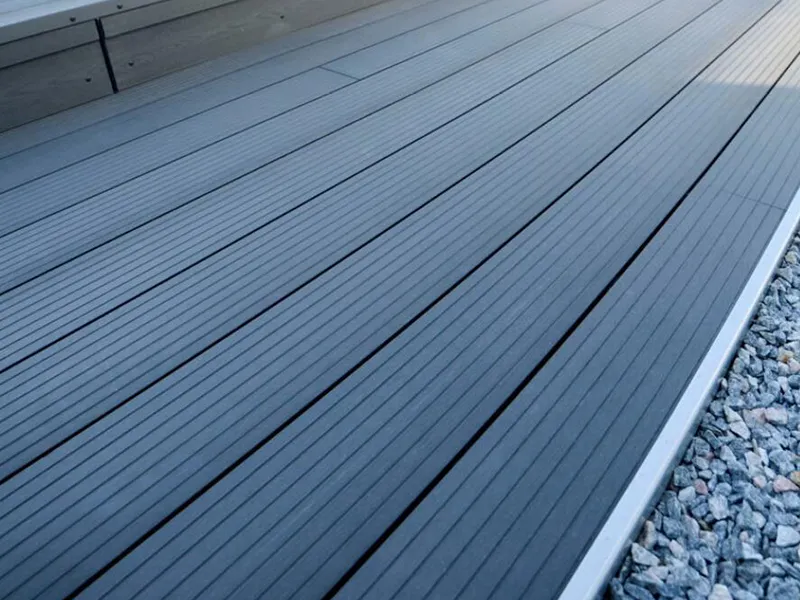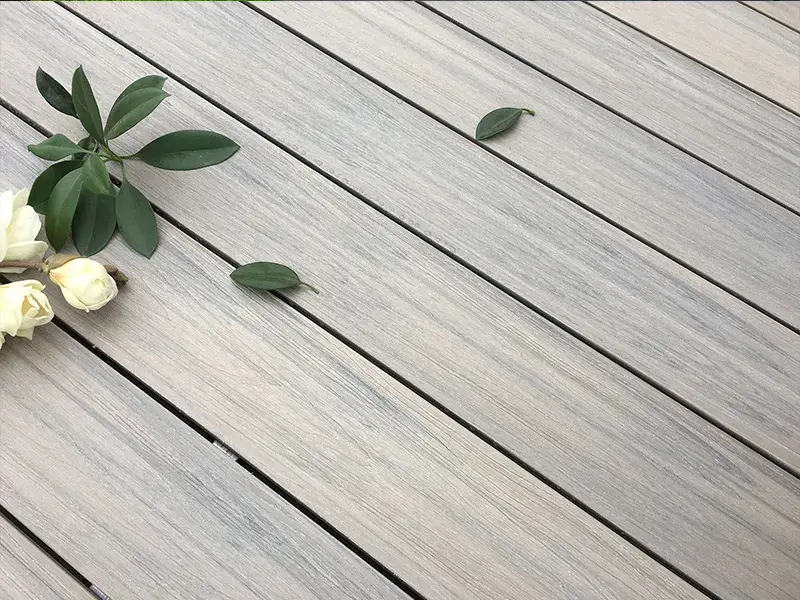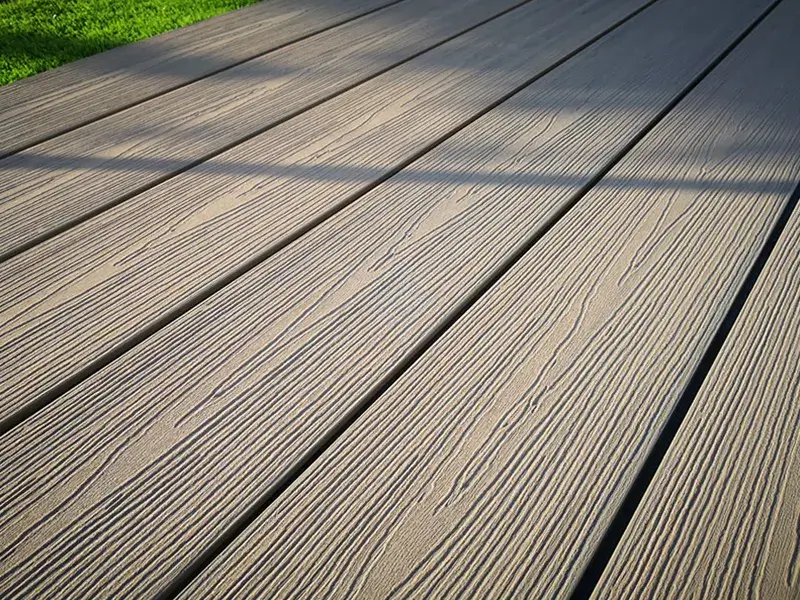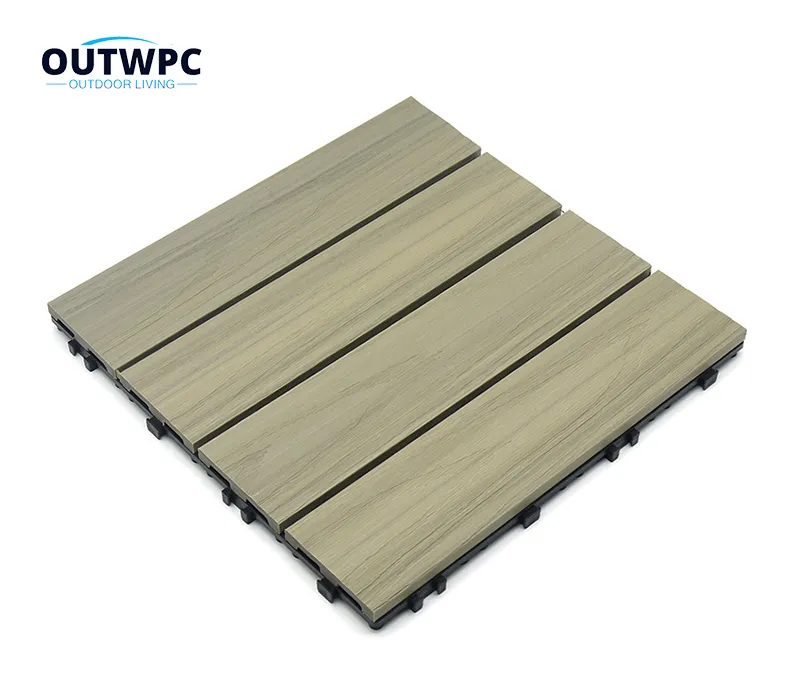Wood Plastic Composite (WPC) decking represents a significant leap forward in outdoor flooring solutions, offering a blend of sustainability, durability, and aesthetic appeal. Over the years, WPC decking has evolved through generations, each introducing enhancements in performance, appearance, and application versatility. Let’s delve into the types and generations of WPC decking, highlighting their unique features, applications, and the introduction of an innovative derivative: WPC Deck Tile.

The Generational Advancements of WPC Decking
First Generation: Non-slip WPC Decking
The first generation of WPC decking, known for its non-slip properties, is predominantly made from Polyethylene (PE) material. Its design features long straight lines and tree grain textures on the surface, catering to safety requirements in wet areas like pool sides. This variant is celebrated for its cost-effectiveness and superior anti-slip performance, making it a practical choice for budget-conscious projects requiring essential safety features.
Second Generation: Co-extruded WPC Decking
Advancing to the second generation, co-extruded WPC decking introduces a dual-material approach. The core is filled with PE material, while the exterior is covered with a harder, more wear-resistant PVC layer. This protective layer significantly enhances the deck’s durability, resistance to fading, and staining, thereby extending its service life. The co-extruded WPC decking represents a balanced fusion of functionality and longevity.
Third Generation: 3D-embossing WPC Decking
The latest in the evolutionary line is the 3D-embossed WPC decking. Building upon the co-extruded base, this third-generation decking features a deeper, more pronounced surface texture that creates a striking 3D effect. This not only boosts the aesthetic appeal, mimicking the natural beauty of wood grains, but also improves anti-slip properties, making it an ideal choice for those seeking both form and function.
Core Variations and Load-Bearing Capabilities: Hollow and solid
Irrespective of the generation, WPC decks can be manufactured with solid, round, or square cores, each presenting distinct differences in load-bearing capacities and cost implications. The round core variant stands out as the best seller due to its optimal balance between cost and structural integrity, whereas solid cores are pricier and square hollow offer lower load-bearing capabilities.
Introducing WPC Deck Tile
Expanding the application possibilities of WPC technology, Deck Tile emerges as a versatile new product. WPC Deck Tile can be aptly described as a compact version of the deck panel, mounted on a plastic base for easy installation. It’s suitable for both indoor and outdoor settings, available in common sizes like 600x600mm square and 600x300mm rectangular tiles. This innovation underscores the adaptability and convenience of WPC products, catering to a broader range of design and functional requirements.
The evolution of WPC decking from its first generation to the latest 3D-embossed variant illustrates the industry’s commitment to innovation, safety, and sustainability. Each generation brings forth improvements in materials, design, and functionality, catering to an ever-expanding array of applications. With the introduction of WPC Deck Tile, the versatility of WPC extends even further, offering solutions that are as convenient as they are aesthetically pleasing. As we continue to embrace these advancements, the future of outdoor flooring looks promising, with WPC decking leading the way in both style and substance.






